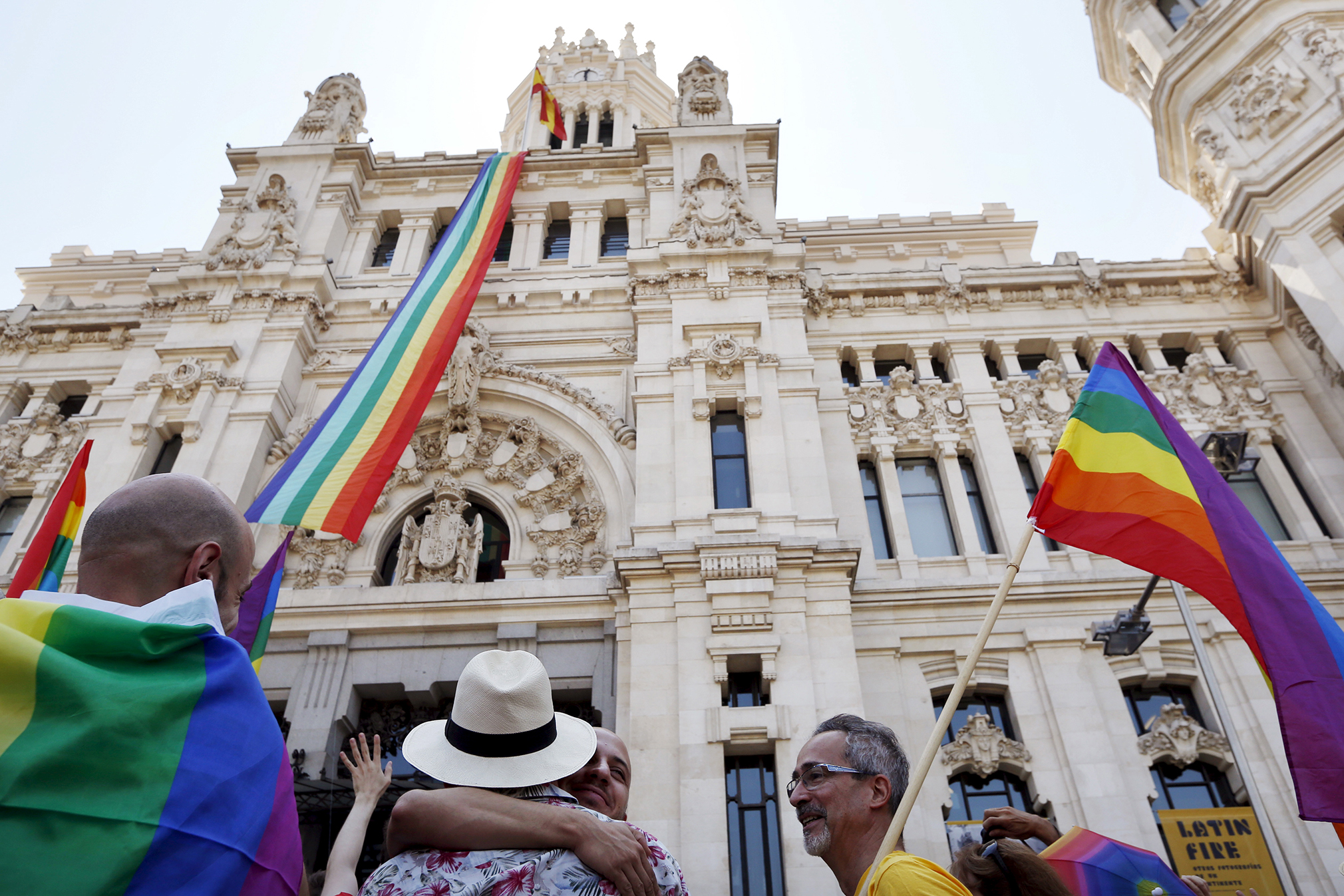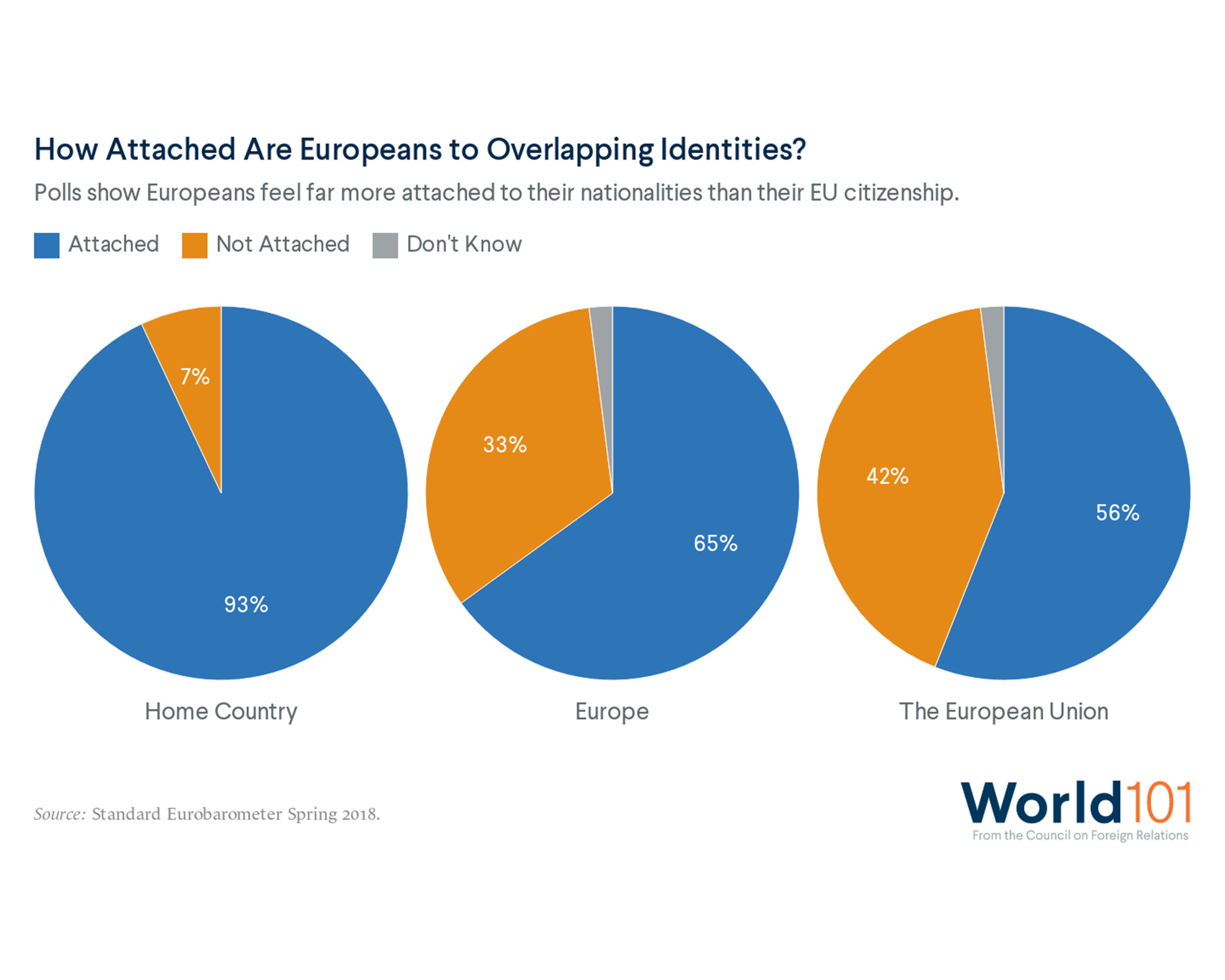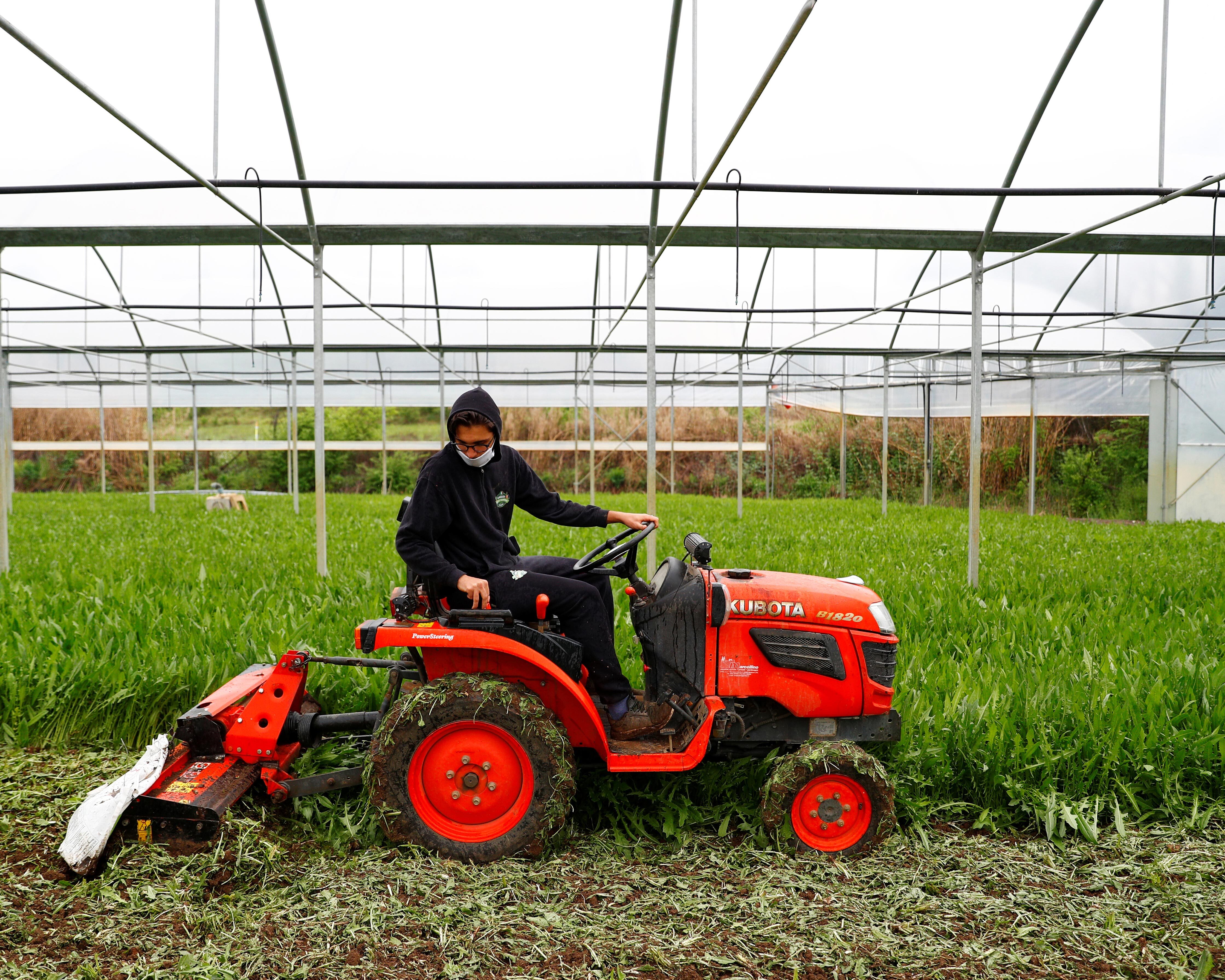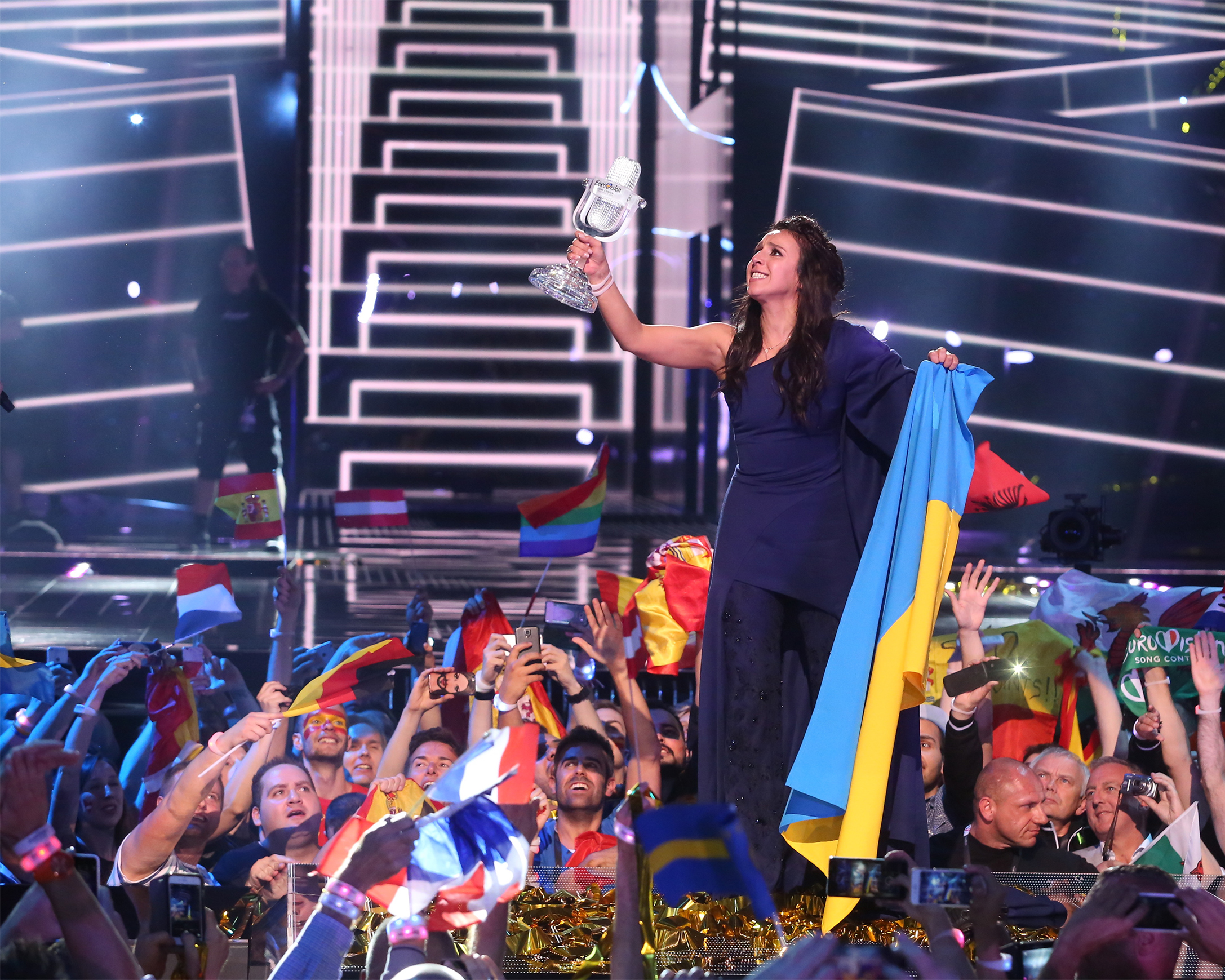People and Society: Europe
Europe has a reputation for its high living standards, given its wealth, promotion of human rights, commitment to social spending, and democratic institutions.
Europe has a reputation for its high living standards, given its wealth, promotion of human rights, commitment to social spending, and democratic institutions. On average, European Union (EU) residents earn more than three times the global average. Most countries in Europe have universal health coverage, which has helped increase the average life expectancy. And European women experience high levels of gender equality. The region also boasts literacy rates well above the global average and has a long history of providing public education. Politically, there are major concerns about democratic backsliding in Hungary and Poland, and outside the EU there are autocratic outliers like Russia and Turkey. But on the whole, most of Europe is still considered free, with longstanding democratic institutions and some of the oldest parliamentary systems in the world.
Country or Continent: Where Do European Allegiances Lie?
Europe is home to more than 800 million people who live across fifty countries. The EU counts twenty-four official languages and more than sixty other regional and minority languages, in addition to the languages spoken by migrants. Given this diversity, a single European identity can be hard to define. The EU was designed to help forge one, encouraging free movement between countries by limiting border controls, funding student exchange programs, and removing restrictions on working in other EU countries. While a shared European identity may never supplant national allegiances, polls show that about two-thirds of EU citizens feel attached to Europe: they are often younger, well-educated, and more affluent people who study in another country or speak more than one language . However, only about half feel a sense of attachment to the EU.
Europe Grapples With Migration Since World War II
After World War II, most of Europe’s colonies in Africa and Asia achieved independence, driving a flow of migrants to the continent. Some were returning to the countries in which they were born, but most, seeking economic opportunity, had never before set foot in Europe. About 1.8 million people came to France from North Africa (mostly Algeria) and Southeast Asia; about half a million came to Portugal from its former African colonies; and about 300,000 arrived in the Netherlands from the Dutch East Indies. This marked a shift: for centuries, Europe had been a major source of global migration, not a destination, and responses to immigrants across the region were uneven. The UK, for example, granted British citizenship to all former colonial subjects in 1948, but by the 1970s, the right to reside in the UK was restricted. Meanwhile, political shifts—including the collapse of the Soviet Union and the enlargement of the European Union—caused surges of people to move within the region, from Eastern to Western Europe. The most recent wave of migration in 2015 saw more than one million migrants, many of them refugees, flee violent conflicts in Africa and the Middle East, particularly the Syrian civil war. Germany and Sweden initially accepted a large number of refugees, but in a climate of increased security threats and with economies still recovering from the 2008 financial crisis, accommodating migrants became politically unpopular. Half of Europeans polled in 2018 viewed migration as the EU’s biggest challenge.
Terrorist Attacks and Migration Crisis Reshape European Society
Over the past five years, two shocks—a wave of religiously inspired terrorist attacks and the influx of migrants from across the Mediterranean—have generated disunity in an already divided Europe. Since 2015, terrorist attacks have killed hundreds of people in major European cities, including Brussels, Nice, and Paris. Concurrently, more than two million migrants have entered Europe, often fleeing violence in Afghanistan, the Middle East, and sub-Saharan Africa. Responses to these dual crises have reshaped European politics and society. France declared a state of emergency and reimposed border controls —a major reversal on a continent that prizes freedom of movement. In Hungary, a public backlash against immigrants led to the construction of fences on its southern border. Opposition to immigration has also galvanized right-wing nationalist parties in countries like Germany and Italy. Together, these factors have contributed to a realignment of political power in Europe with traditional centrist parties losing out to right-wing, anti-immigration groups.
Security Challenges Threaten EU’s Promise of Free Movement
The free movement of people is a core EU value, along with the free movement of labor, capital, and goods. This is most clearly embodied in Europe’s visa-free Schengen Area, which eliminated border controls among twenty-six European countries when it was created in 1995. That means that people and goods can move seamlessly between the countries of the Schengen zone without border checks, saving time and money. Every day, 170,000 French citizens head to work across the border in Switzerland (which is not part of the EU but is part of the Schengen zone), then drive home to France as if it were the next town; 70,000 Italians and 60,000 Germans do the same . But recent security challenges threaten Schengen’s viability. Concerns about terrorism or the 2015 migration crisis prompted six countries—Austria, Denmark, France, Germany, Norway, and Sweden—to reintroduce border controls. Bringing back hard borders does more than impinge on core values of the EU; it has major financial implications: more than 75 percent of goods in the EU are transported by road, and border checks can result in expensive delays.
Pandemic-Driven Travel Restrictions Threaten Europe’s Crops
West European farms depend on seasonal workers from Eastern Europe—an arrangement made possible by EU policies facilitating free movement and coordinated labor laws. But as COVID-19 propelled countries to erect border controls and travel restrictions, laborers have been unable to reach farms several countries away. In spring 2020, Romanians who typically harvest white asparagus in Germany, for example, couldn’t pass through the Czech Republic and Hungary, which had closed their borders. By the end of March 2020, French farmers said they were missing two hundred thousand workers; Germany estimated a deficit of three hundred thousand. Prized crops rotted in fields as countries put out calls for out-of-work citizens, furloughed from other industries, to help with the harvest. In addition to short-term economic consequences for farmers unable to salvage their crops, the EU is concerned about the implications for the region’s food supply. The EU has urged countries to exempt seasonal laborers from travel restrictions by designating them “critical workers” but can’t force national governments to do so.
Reactions to Changing Demographics on the Soccer Field
Some of the most visible signs of Europe’s growing diversity are found in its beloved soccer (or football) teams. More than half the players of the 2018 World Cup–winning French national team, for example, have African ancestry. In the aftermath of the 2015 migration crisis, this growing diversity—and fans’ reactions to players, both negative and positive—has revealed the region’s broader ideas about immigrants. A common experience among second- or third-generation immigrant players is the feeling of an earned identity: the tendency to be described as Belgian, French, or German when they win, but as Egyptian, of Congolese descent, or simply, as immigrants, when they lose. But, in one case, the high visibility of a Muslim player has actually increased tolerance, not sparked division. Liverpool, home to famed Egyptian player Mohamed Salah, has avoided the spike in Islamophobia seen in much of the United Kingdom. Poll results show more Liverpool fans see Islam as compatible with British values than elsewhere and write fewer Islamophobic tweets; the city experiences also fewer hate crimes than expected.
Cost of Going Gray: Europe’s Aging Challenge
For the first time in history, there are more people in the world over the age of sixty-five than under the age of five. Europe’s population, like much of that of the West, is aging. Life expectancy in the EU has increased by more than two years per decade since the 1960s, and, at the same time, Europeans are having fewer children. An aging Europe presents economic challenges: fewer young people could mean labor shortages, which would hamper economic growth, and reduced income tax revenue. At the same time, increasing elderly populations stretch countries’ pension and health-care systems, which European countries already support at relatively high rates. Compared to other regions, Europe devotes more of its public spending to aging, rather than relying on its citizens to retire later or dip into their own savings. Between 2016 and 2070, the total cost of aging in the EU (public spending on pensions, health care, long-term care, education, and unemployment benefits) will likely increase to 26.7 percent of gross domestic product (GDP).
Religious Diversity Increases, Secularism Finds Challenges
Whether Catholic, Protestant, or Eastern Orthodox, the majority of Europeans have historically fallen under one umbrella religion: Christianity. For much of European history, these divisions sparked conflict, resulting in devastating wars between Catholics and Protestants, in particular. But in the seventeenth century, European leaders began championing religious tolerance, and religious divisions gradually receded to the backburner. Today, the majority of Western Europeans are non-practicing Christians; nearly half of the Netherlands identifies as religiously unaffiliated. (One major exception is Northern Ireland, where religious and political identities are bound together. “Peace walls” still snake through the capital, Belfast, separating Protestant areas from Catholic ones, corresponding to those loyal to union with Britain from those who favor an independent, united Ireland.) Beyond Christianity, Europe is now home to people from more diverse religious backgrounds who are challenging some ways in which European countries impose secularism, such as laws prohibiting religious expression. To some French Muslims, in particular, a secularism that outlaws the wearing of face veils is repressive, not liberating.
“Rainbow Curtain” Divides Europe
During the Cold War, the Iron Curtain was the barrier between Europe’s Soviet-aligned countries in the east and the democratic countries of the west. Thirty years after the collapse of the Soviet Union, civil liberties across Europe continue to look starkly different on either side of this historic divide. In the case of marriage equality, this disparity is sometimes referred to as Europe’s “rainbow curtain.” For example, the majority of Western European countries have legalized gay marriage, but no former Communist countries have done so. On either side of the curtain, opinions are polarized. According to a recent poll, 90 percent of Russians oppose same-sex marriage, while more than 85 percent of those in Denmark, the Netherlands, and Sweden are for it. The EU encourages its members to recognize same-sex marriage or civil unions, but does not impose the change. It does, however, protect same-sex couples’ rights to freedom of movement and residence. But human rights abuses persist in Europe: for example, gay men in Chechnya, an autonomous region of Russia, are systematically detained and sometimes even killed for their sexual identity.
Regional Politics Take Stage in Europe’s Oldest Singing Contest
In 2016, two hundred million people tuned in to Eurovision, the wildly popular song contest pitting more than forty (mostly) European countries against one another during a three-day multinational singing showdown. (Think American Idol crossed with the Olympics.) A complicated voting process, combining audience votes with the judgment of an expert panel, is intended to give each contestant a fair shake, but shared cultural and regional ties mean that Greece and Cyprus, for example, can always count on each other’s votes. Like many postwar creations, Eurovision was designed to cultivate peaceful relations between European countries, replacing armed battles with elaborate performances. But in recent years, political realities have infiltrated its sunny facade. Russia’s contestant was booed in 2014, a few months after it invaded the Ukrainian region of Crimea, and in 2016, Ukraine won with a pointed song about Stalin’s deportation of the Crimean Tatar ethnic group during World War II.





